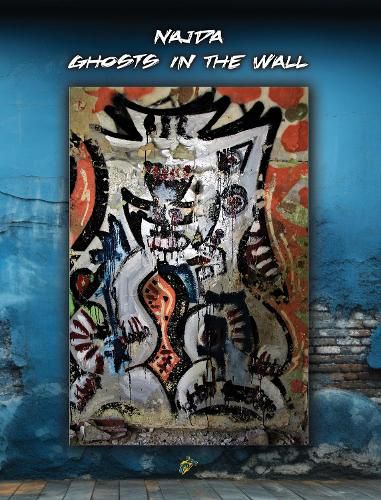Readings Newsletter
Become a Readings Member to make your shopping experience even easier.
Sign in or sign up for free!
You’re not far away from qualifying for FREE standard shipping within Australia
You’ve qualified for FREE standard shipping within Australia
The cart is loading…






This title is printed to order. This book may have been self-published. If so, we cannot guarantee the quality of the content. In the main most books will have gone through the editing process however some may not. We therefore suggest that you be aware of this before ordering this book. If in doubt check either the author or publisher’s details as we are unable to accept any returns unless they are faulty. Please contact us if you have any questions.
Najda in Ghosts in the Wall: a series of paintings by Stephen Najda The art of Stephen Najda crosses many boundaries, over a wide spectrum of subjects, and a multitude of techniques. A complex individual with a deep curiosity and an extraordinary fertile mind that crosses a huge range of subjects that coalesce into art in an attempt to articulate the known fundamental interactions of the universe and forms of matter. Often called Renaissance man, Najda is a precociously talented and prolific artist bringing a multidisciplinary background in science and art, mixed with an insatiable appetite for adventure and travel. Stylistically placed between Matisse, Picasso and de Kooning, Najda features expressionistic figures representing the primitive self in big, bold, hugely imaginative paintings. 'Ghosts in the Wall' was painted by Najda 'en plein air' in an old ruined sanatorium where the Nazi's committed atrocities in eastern Poland. The painting is done with large gestural brushstrokes of abstract expressionism, improvised by fingers, paint applied straight from the tube, marked with brick from the sanatorium to create a smeared, smudged, raw physicality, resembling a kind of organised chaos. This is a painting that comes from the deep as Najda absorbs the history of the location, re-enacting the scene of insanity on canvas. This is one of Najda's most intense works. It's a primordial experience - think of Francisco Goya, Hieronymus Bosch, Francis Bacon, or Zdzislaw Beksinski.
$9.00 standard shipping within Australia
FREE standard shipping within Australia for orders over $100.00
Express & International shipping calculated at checkout
This title is printed to order. This book may have been self-published. If so, we cannot guarantee the quality of the content. In the main most books will have gone through the editing process however some may not. We therefore suggest that you be aware of this before ordering this book. If in doubt check either the author or publisher’s details as we are unable to accept any returns unless they are faulty. Please contact us if you have any questions.
Najda in Ghosts in the Wall: a series of paintings by Stephen Najda The art of Stephen Najda crosses many boundaries, over a wide spectrum of subjects, and a multitude of techniques. A complex individual with a deep curiosity and an extraordinary fertile mind that crosses a huge range of subjects that coalesce into art in an attempt to articulate the known fundamental interactions of the universe and forms of matter. Often called Renaissance man, Najda is a precociously talented and prolific artist bringing a multidisciplinary background in science and art, mixed with an insatiable appetite for adventure and travel. Stylistically placed between Matisse, Picasso and de Kooning, Najda features expressionistic figures representing the primitive self in big, bold, hugely imaginative paintings. 'Ghosts in the Wall' was painted by Najda 'en plein air' in an old ruined sanatorium where the Nazi's committed atrocities in eastern Poland. The painting is done with large gestural brushstrokes of abstract expressionism, improvised by fingers, paint applied straight from the tube, marked with brick from the sanatorium to create a smeared, smudged, raw physicality, resembling a kind of organised chaos. This is a painting that comes from the deep as Najda absorbs the history of the location, re-enacting the scene of insanity on canvas. This is one of Najda's most intense works. It's a primordial experience - think of Francisco Goya, Hieronymus Bosch, Francis Bacon, or Zdzislaw Beksinski.